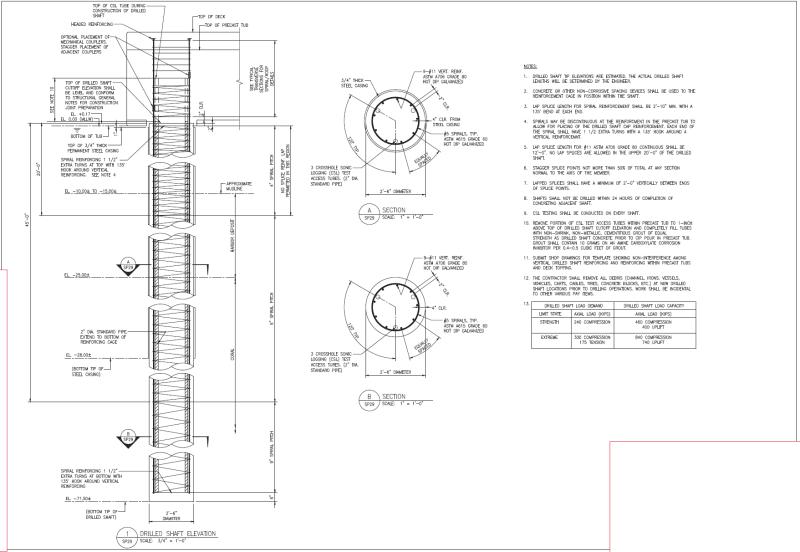I have a job currently being bid on. New concrete pier in the ocean. 2'-6" drilled shafts (yes, you heard that right, not driven piles). Our shafts are 72ft long with 28ft long permanent steel casings... coral at 69ft deep. Temporary casing is optional if Contractor wants.
RFI came in during bidding. RFI asks, "can Contractor oversize the permanent casing to allow extraction of the 3'-0" ID temporary casing". I discussed it with Geotech and told him that I do not want the shaft oversized as this affects structure behavior and affects the precast superstructure elements. He responded back to the RFI that shafts cannot be oversized and that this is a means and methods issue. Seems a bit of a cop-out answer, but, oh well.
That means the Contractor was thinking that they could extract the temporary casing on the inside of the permanent casing? Forgive my ignorance, but is that how you typically withdraw a temporary casing when it is below a permanent casing? Geotech seems to think the more logical way is to advance the permanent casing down to the depth required to satisfy constructability and then withdraw permanent casing back to the final elevation during concreting. Does this seem more logical.
I was hoping to get your guys' input on the matter.
Thanks.
RFI came in during bidding. RFI asks, "can Contractor oversize the permanent casing to allow extraction of the 3'-0" ID temporary casing". I discussed it with Geotech and told him that I do not want the shaft oversized as this affects structure behavior and affects the precast superstructure elements. He responded back to the RFI that shafts cannot be oversized and that this is a means and methods issue. Seems a bit of a cop-out answer, but, oh well.
That means the Contractor was thinking that they could extract the temporary casing on the inside of the permanent casing? Forgive my ignorance, but is that how you typically withdraw a temporary casing when it is below a permanent casing? Geotech seems to think the more logical way is to advance the permanent casing down to the depth required to satisfy constructability and then withdraw permanent casing back to the final elevation during concreting. Does this seem more logical.
I was hoping to get your guys' input on the matter.
Thanks.

